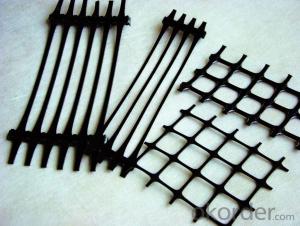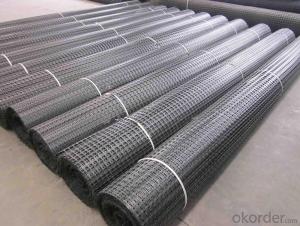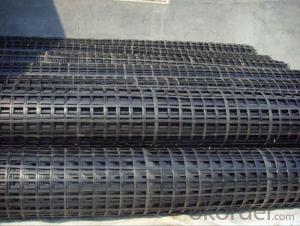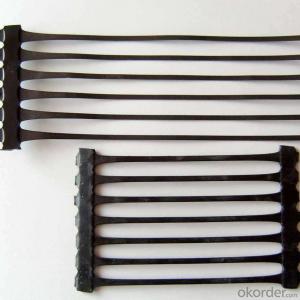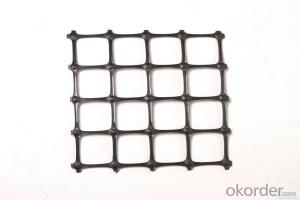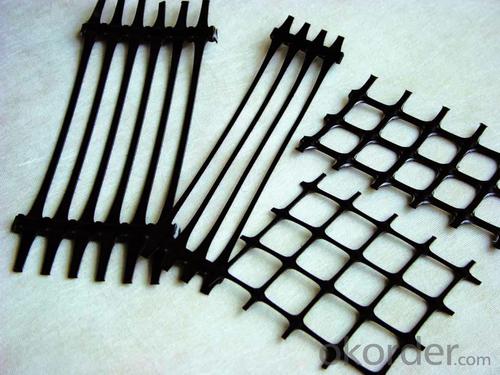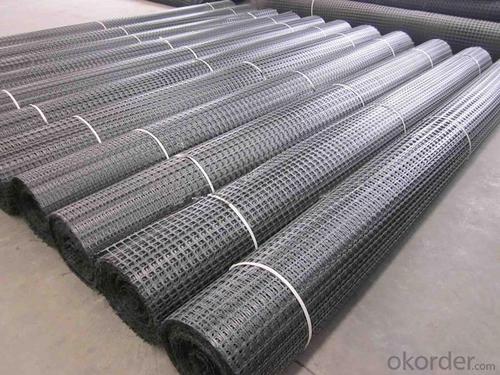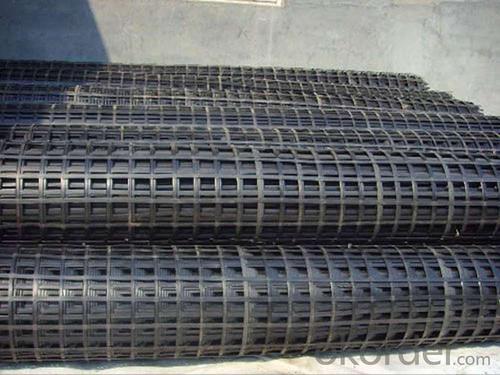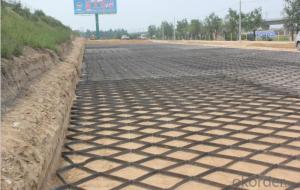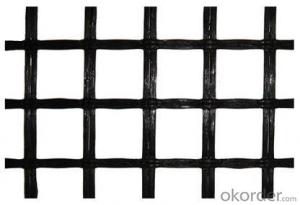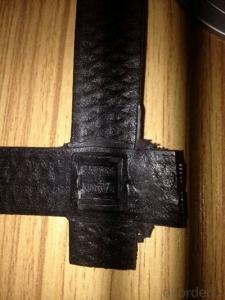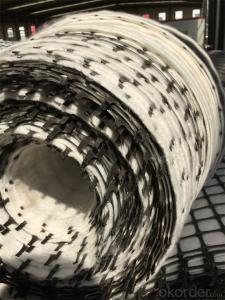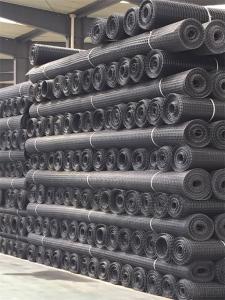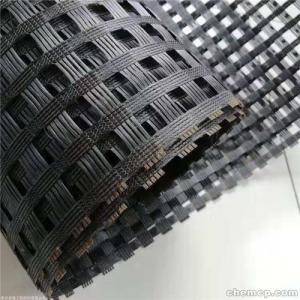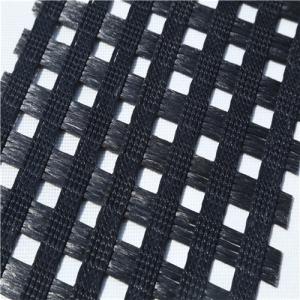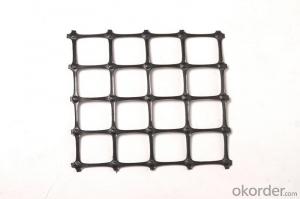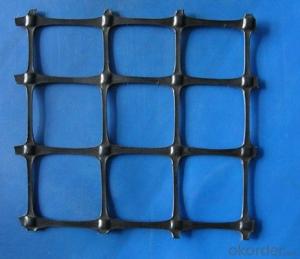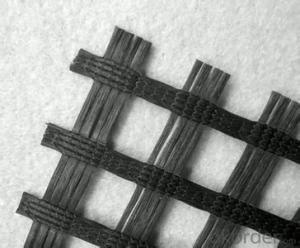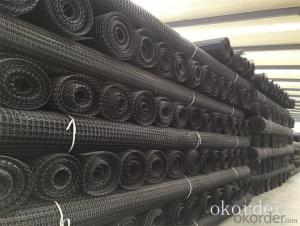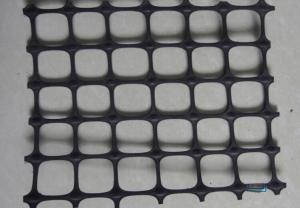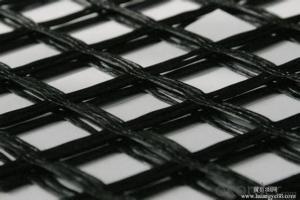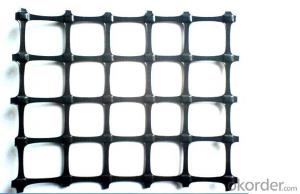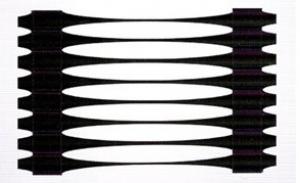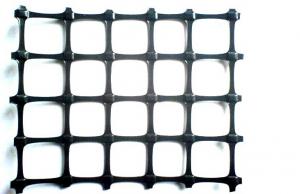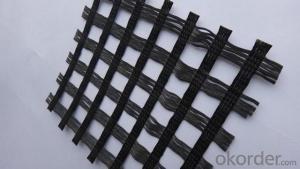High Strength Soil Stabilisation Polyester Geogrid for Constructional Reinforcement
- Loading Port:
- Shanghai
- Payment Terms:
- TT or LC
- Min Order Qty:
- 50000 m²
- Supply Capability:
- 2000000 m²/month
OKorder Service Pledge
OKorder Financial Service
You Might Also Like
Polyester Geogrid with High Strength for Constructional Reinforcement
Description Of Polyester Geogrid with High Strength for Constructional Reinforcement:
Fiberglass geogrid is based on fiberglass woven cloth coated with modified bitumen or PVC, it was developed to address the problem of pavement cracking on highways, roads and runways, driven by a need to reduce cost for infrastructure maintenance and repair.
It is characterized by high tensile strength in axial and lateral directions, low stretch rate, alkali-resistance, low temperature- resistance, as well as convenience in construction and low price. It can be used on pitch pavement to prevent cracks and prolong pavement service life. It also can be used as a basal reinforcement material for hillsides, reservoirs, harbors, ports, water channels, seawalls, etc.
Main Features of Polyester Geogrid with High Strength for Constructional Reinforcement:
1.High tensile strength, low elongation.
2.No long-term creep: the product can keep for a long time performance.
3.Thermal stability: fiber glass melting temperature above 1000 ℃.
4.The compatibility with asphalt.
5.Physical and chemical stability.
Specifications of Polyester Geogrid with High Strength for Constructional Reinforcement:
Tensile Strength (KN) | Warp | >30 | >50 | >60 | >80 | >100 | >120 | >150 | >200 |
Weft | >30 | >50 | >60 | >80 | >100 | >120 | >150 | >120 | |
Elongation(%) | <4< p=""> | <4< p=""> | <4< p=""> | <4< p=""> | <4< p=""> | <4< p=""> | <4< p=""> | <4< p=""> | |
Mesh Size(mm) | 25.4*25.4 | 25.4*25.4 | 25.4*25.4 | 25.4*25.4 | 25.4*25.4 | 25.4*25.4 | 25.4*25.4 | 25.4*25.4 | |
Elastic Modulus | 76 | 76 | 76 | 76 | 76 | 76 | 76 | 76 | |
Width(m) | 1~6 | 1~6 | 1~6 | 1~6 | 1~6 | 1~6 | 1~6 | 1~6 | |
Length(m) | 50~300 | 50~300 | 50~300 | 50~300 | 50~300 | 50~300 | 50~300 | 50~300 | |
Temperature Resistant(℃) | -100~280 | -100~280 | -100~280 | -100~280 | -100~280 | -100~280 | -100~280 | -100~280 | |
Resin Content (%) | 18~20 | 18~20 | 18~20 | 18~20 | 18~20 | 18~20 | 18~20 | 18~20 | |
Glue Type | Bitumen PVC SBR soakage | Bitumen PVC SBR soakage | Bitumen PVC SBR soakage | Bitumen PVC SBR soakage | Bitumen PVC SBR soakage | Bitumen PVC SBR soakage | Bitumen PVC SBR soakage | Bitumen PVC SBR soakage | |
Applications of Polyester Geogrid with High Strength for Constructional Reinforcement:
Strengthen bitumen concrete roadway and reduce and prevent various kinds of reflection gaps on roadway.
1.Suitable for highway, railway, airport road of subgrade enhancement.
2.Suitable for the large parking lot and port freight yard that the foundations of the permanent load increased.
3.Suitable for railway, highway slope protection.
4.Suitable for culverts.
5.Suitable for the uniaxial tensile geogrid reinforced soil secondary enhancement, after further enhance soil, prevent soil erosion.
6.Mining, tunnel reinforcement.
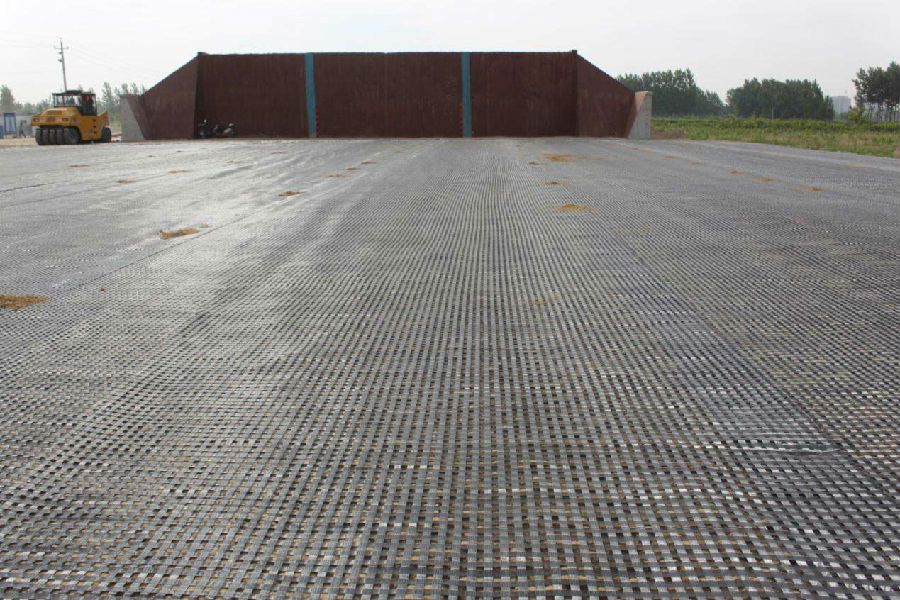
IMages of Polyester Geogrid with High Strength for Constructional Reinforcement:
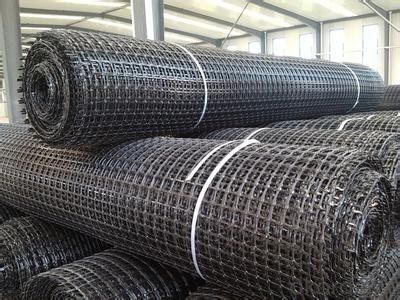
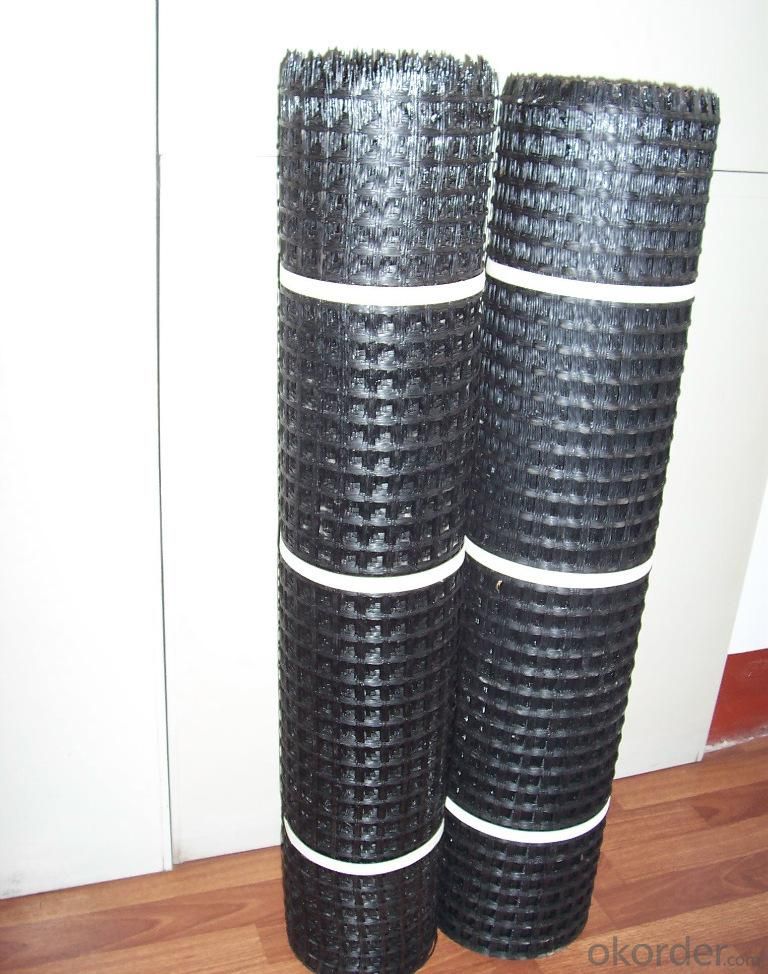
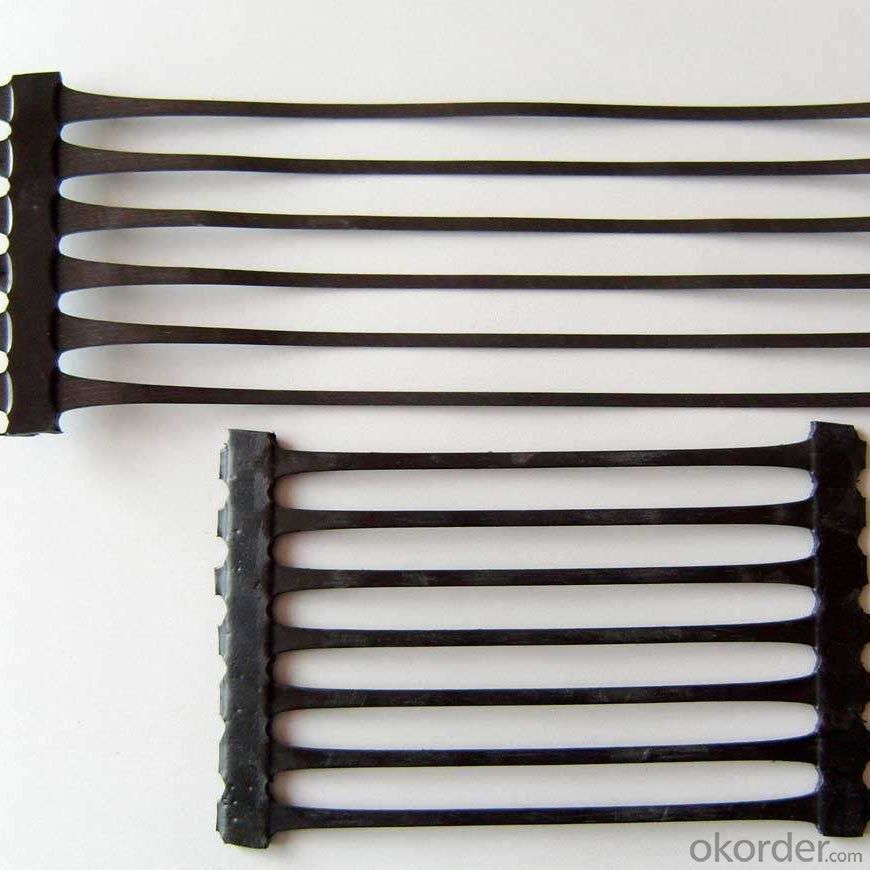
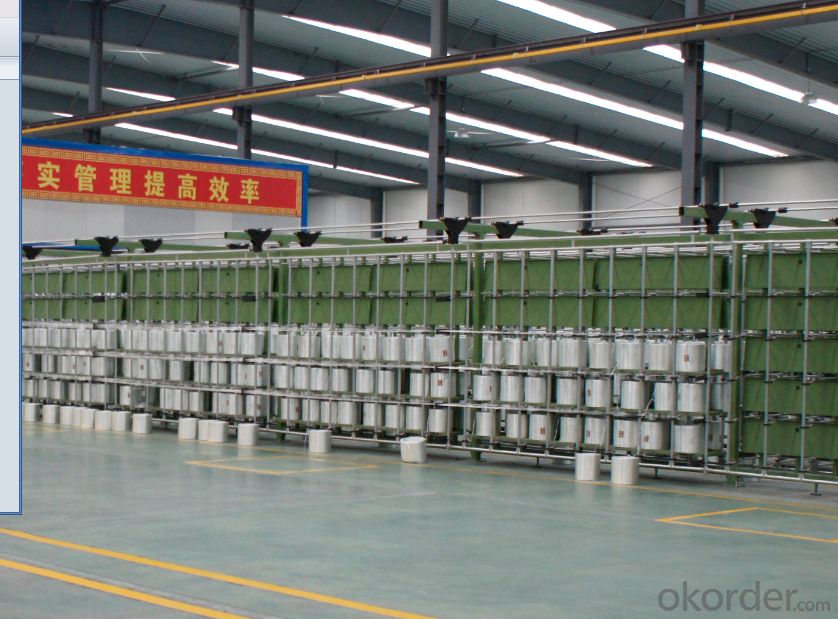
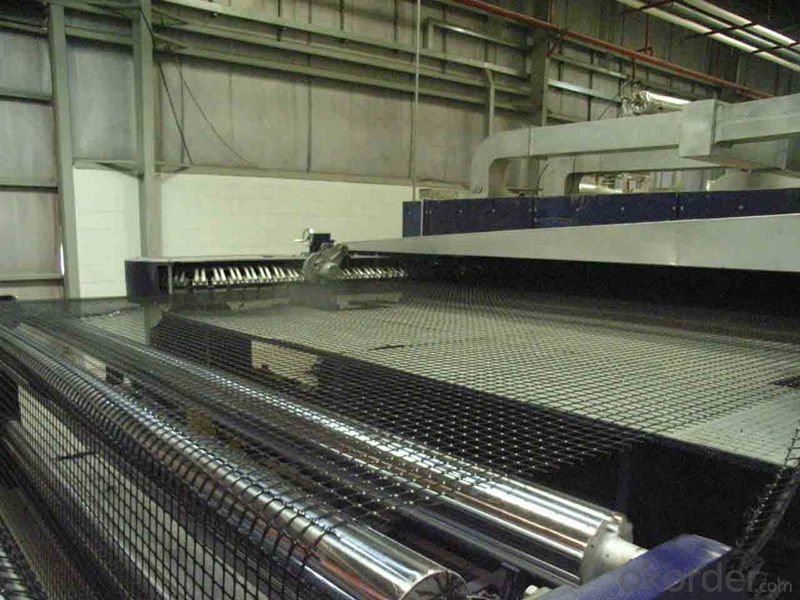
FAQ of Polyester Geogrid with High Strength for Constructional Reinforcement:
1. What are we supplying?
We are specialized in producing Geosynthetic materials, like Geogrid Series, HDPE Geocell, Geonet, Geotextile, Geomat, Tri Denmensional Composite Grainage Geonet, and Geomembrane Series.
.
2. How Many years experience do we have?
We have been exported to more than 20 countries in the past 15 years.
3. How long do we usually reply your request?
We always reply our customer within 24 hours.
- Q: Can geogrids be used in underwater applications?
- Yes, geogrids can be used in underwater applications. They are commonly used to stabilize the soil and prevent erosion in underwater environments such as riverbanks, coastlines, and underwater pipelines. Geogrids provide strength and stability to the soil, allowing it to withstand the forces of water currents and waves.
- Q: What is the recommended geogrid roll width for specific applications?
- The recommended geogrid roll width for specific applications can vary depending on factors such as the type of soil, the slope angle, and the desired level of reinforcing strength. It is best to consult with a geotechnical engineer or supplier who can assess the specific project requirements and provide a suitable recommendation.
- Q: Are geogrids resistant to microbial attack?
- Yes, geogrids are typically resistant to microbial attack.
- Q: How do geogrids improve the performance of geocell-reinforced embankments?
- Geogrids improve the performance of geocell-reinforced embankments by providing additional tensile strength and stability to the structure. They enhance the load-bearing capacity of the embankment, preventing lateral spreading and soil erosion. Geogrids also distribute the applied loads more evenly, reducing the stress on the geocell walls and maintaining the integrity of the structure. Overall, geogrids enhance the overall performance, longevity, and safety of geocell-reinforced embankments.
- Q: How do geogrids affect soil compaction?
- Geogrids can positively affect soil compaction by providing reinforcement and stability to the soil, reducing the potential for settlement. They distribute the applied load more evenly, improving the load-bearing capacity of the soil and reducing the chances of soil movement or deformation.
- Q: Can geogrids be used in reinforcement of underground tunnels and caverns?
- Yes, geogrids can be used in the reinforcement of underground tunnels and caverns. Geogrids are commonly used in geotechnical engineering applications to improve soil stability and provide reinforcement. They can be installed as a reinforcement layer within the tunnel or cavern walls to enhance their structural integrity and prevent potential collapses or deformations. The geogrids act as a reinforcement material, distributing the loads and increasing the overall strength of the underground structures.
- Q: Are geogrids suitable for use in reinforced embankments?
- Yes, geogrids are suitable for use in reinforced embankments. They are commonly used in civil engineering projects to provide stability, prevent soil erosion, and improve load-bearing capacity in embankment structures. Geogrids effectively distribute stress, enhance soil confinement, and reinforce the embankment to withstand heavy loads and prevent deformations.
- Q: Are geogrids resistant to fire?
- No, geogrids are not typically resistant to fire. They are primarily used for soil stabilization and reinforcement purposes and do not possess inherent fire-resistant properties.
- Q: Do geogrids provide reinforcement to geosynthetic asphalt liners?
- Yes, geogrids do provide reinforcement to geosynthetic asphalt liners.
- Q: What are the design considerations for geogrids in mechanically stabilized earth walls?
- Some of the key design considerations for geogrids in mechanically stabilized earth (MSE) walls include selecting the appropriate geogrid material and strength, determining the required geogrid spacing and length, considering the connection and anchorage details, assessing the interface friction between the geogrid and the soil, and evaluating the long-term durability and performance of the geogrids in the specific environmental conditions. Additionally, proper installation practices and quality control measures should be implemented to ensure the geogrids are correctly positioned and tensioned within the MSE wall system.
Send your message to us
High Strength Soil Stabilisation Polyester Geogrid for Constructional Reinforcement
- Loading Port:
- Shanghai
- Payment Terms:
- TT or LC
- Min Order Qty:
- 50000 m²
- Supply Capability:
- 2000000 m²/month
OKorder Service Pledge
OKorder Financial Service
Similar products
Hot products
Hot Searches
Related keywords
